
N.S.
Savannah 1962 to 1972 in operation - an
Please Note: Firefox and some other Search Engines may not be suitable
Use Google Chrome for this Web Page to load perfectly!
Please Note: All ssMaritime and other related maritime sites are 100% non-commercial and privately owned, thus ssmaritime is NOT associated with any shipping company or any other organisation! Although the author has worked and been involved in the passenger shipping industry for well over 60 years, but due to his old age and poor health, he was forced to retire. Yet, he has completed well over 1,550 Classic Liners, Passenger-Cargo Liners as well as humble converted C3 converted Migrant Liners, which has transported countless thousands of folk to the new world, as well on vacations’. I trust the features online will continue to provide Classic Liner and Ship enthusiasts both the information they are seeking, but more so provide a great deal of pleasure and relive many happy memories!
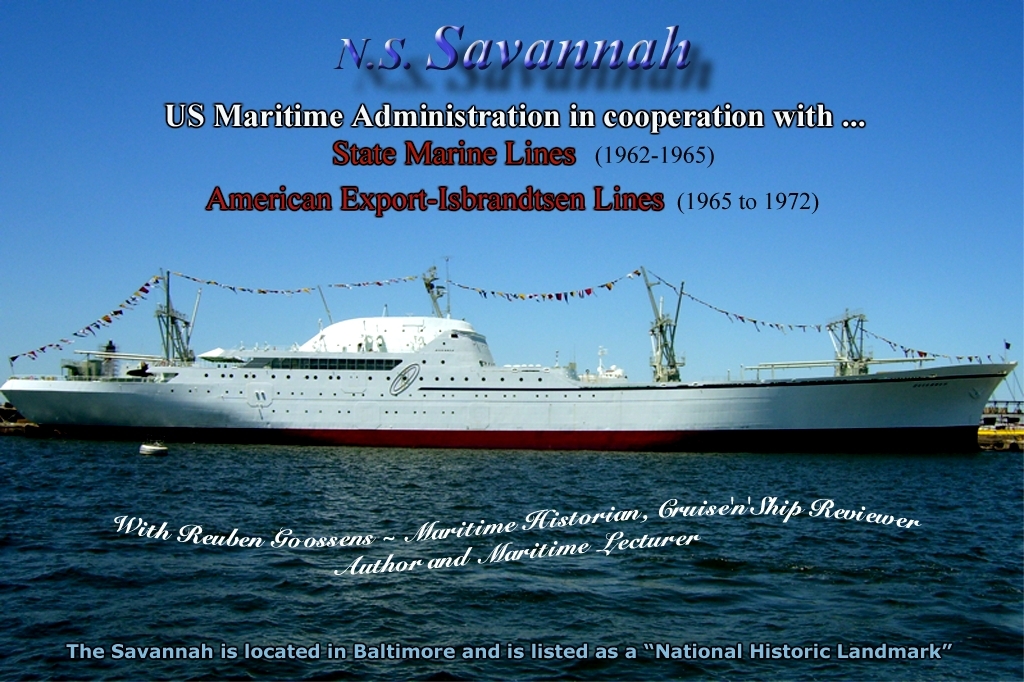
in Service 1962 - 1972
This extremely expensive ship for her day carried passengers for just several years and within ten years from her maiden voyage in 1962 she even ended her cargo services and has been laid up ever since.
We need to remember that for a ship that cost for that time a massive US$49.9 million when she was built from 1958 and completed in 1962, and then having sailed for around two and a half years before ceased her passenger services, what a total waste of money! And we need to remember that almost $50 million in 1962 was like saying a half a billion dollars in today’s value, if not more, thus you would want something much more than just a couple of years, and a grand total of ten years from your massive investment!
As I already
said, the N.S. Savannah was an ultra modern,
elegant and she was certainly one of the most streamlined ships
built for her day, and let me be totally honest she is still as
beautiful today as she was on the day as she was she departed on
her maiden voyage in 1962! I also feel that the
But the truth is
that due to sheer fear of her being an “Atomic ship”
she became a failure from the very beginning, in fact very much
like her namesake, a ship also built in
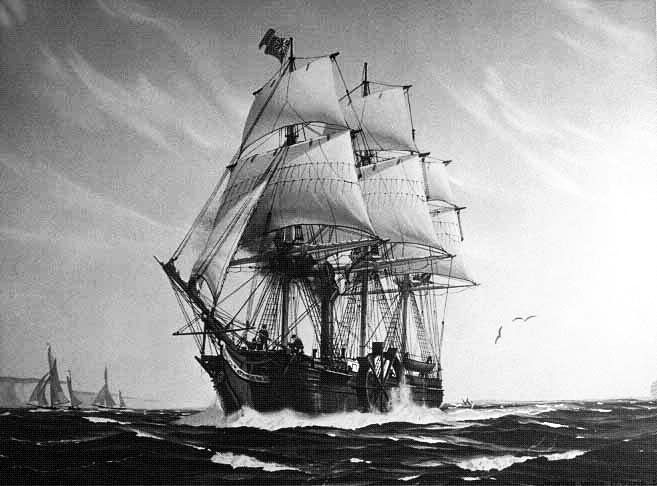
No other
American owned steamship would cross the Atlantic for another
thirty years after
Her keel was
laid down on May 22, 1958, at the “New York Shipbuilding
Corporation” at
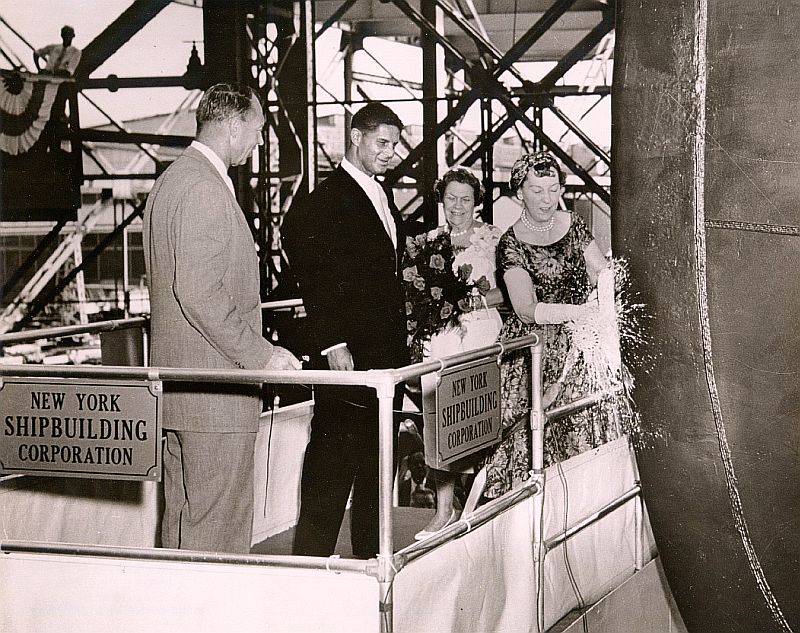
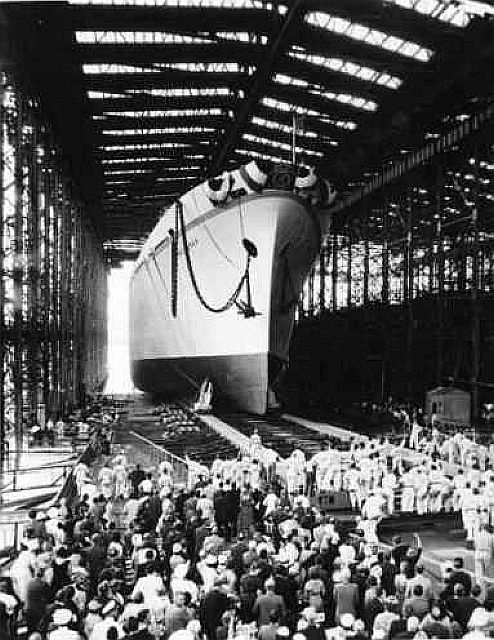
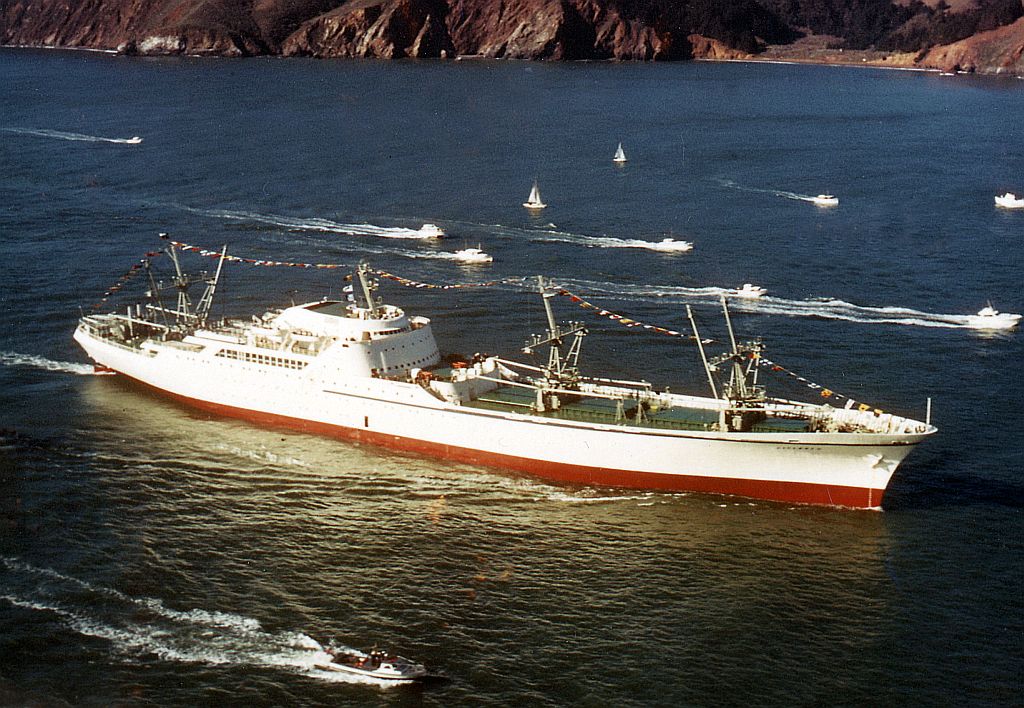
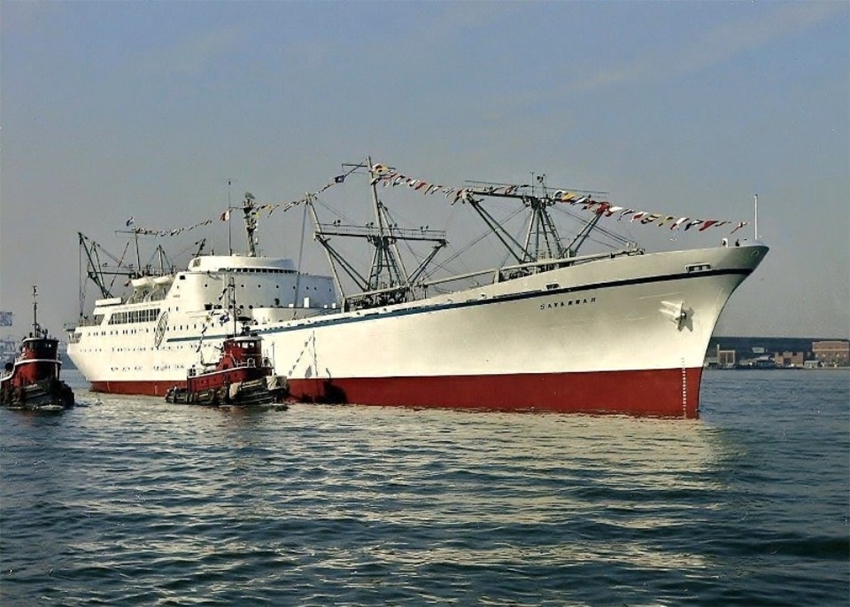
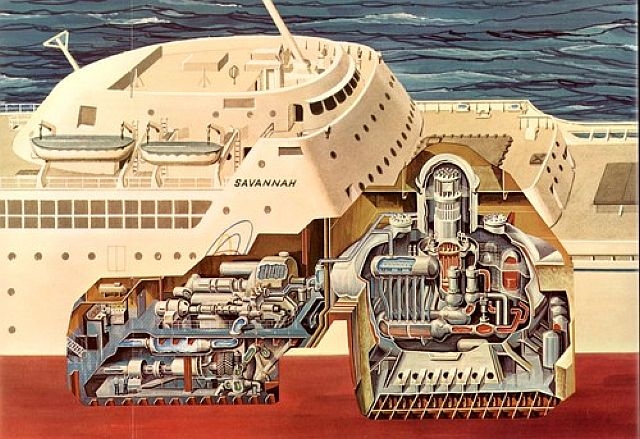
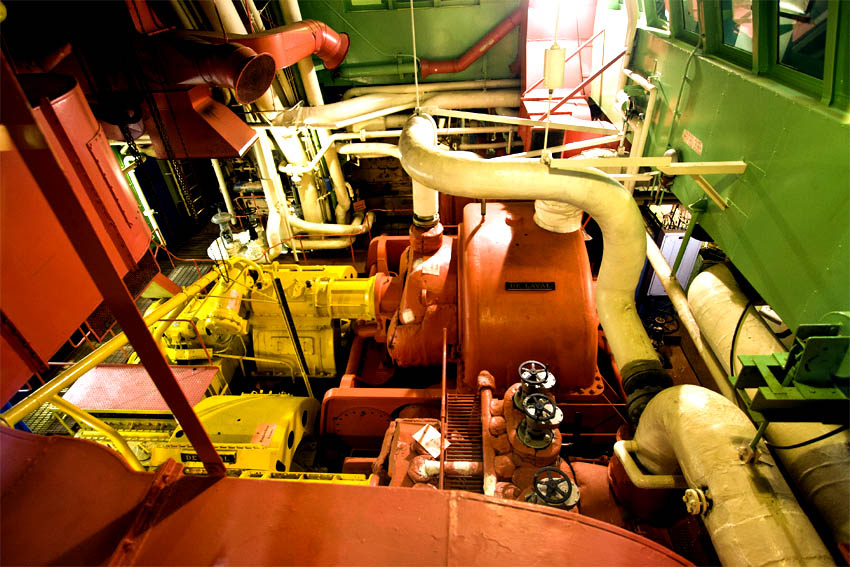
An overhead view of
the engine room
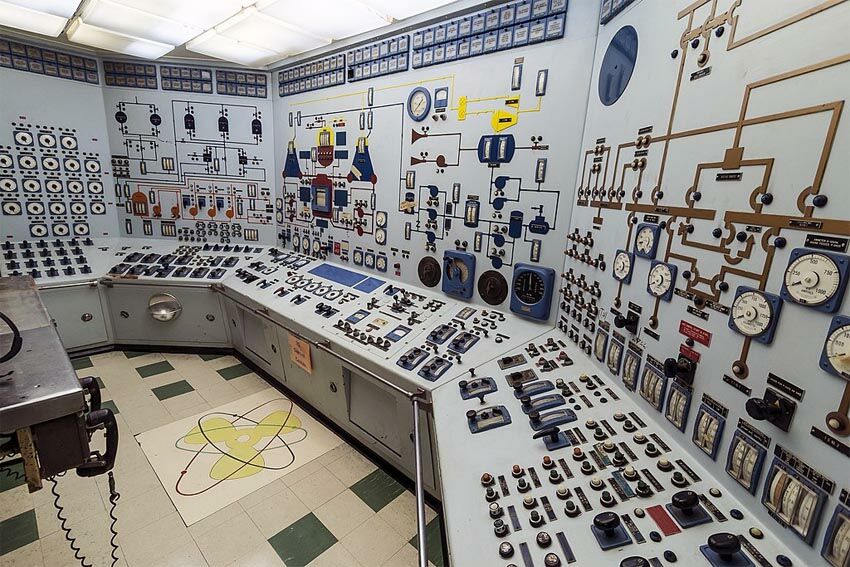
The nerve centre of
the engine (control) room!
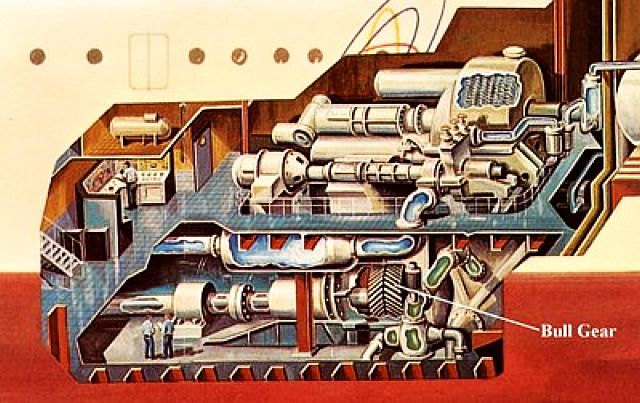

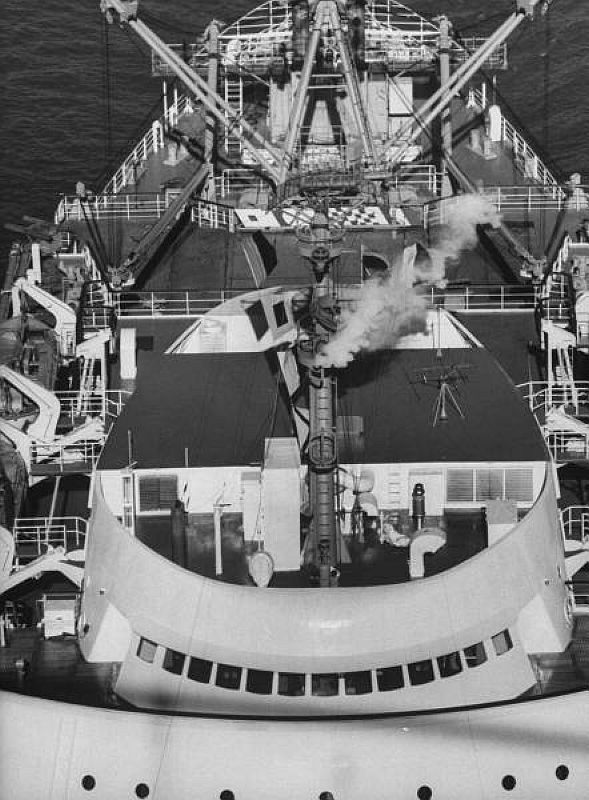
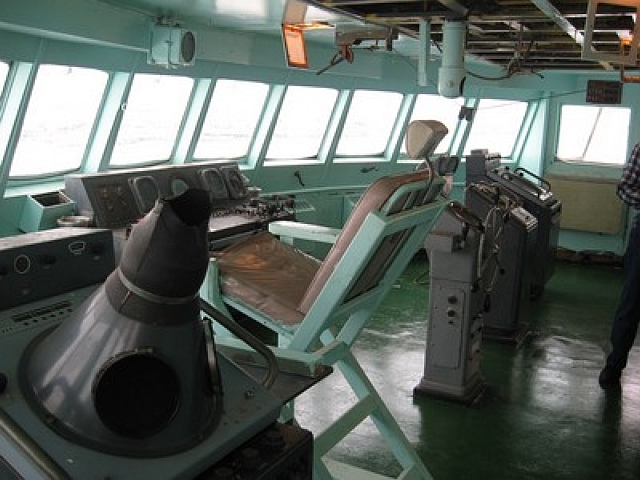
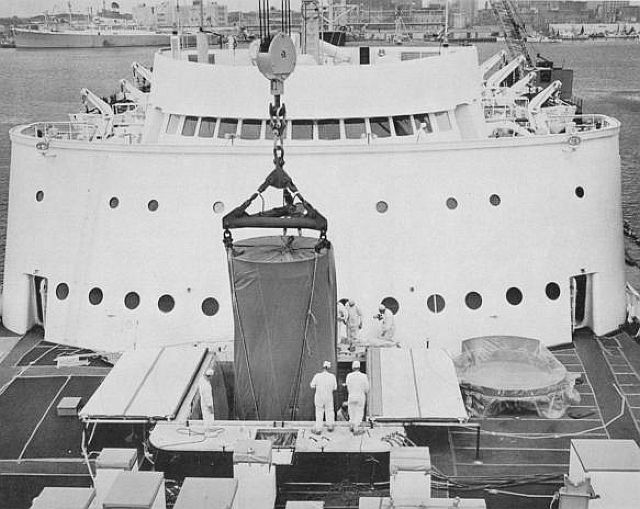
She had seven holds served by three unusual looking “Ebel” rigged self-slewing derricks mounted on lightweight tubular frame “masts.’ Yet cargo her capacity was only 8,500 tons of freight in 652,000 cubic feet (18,000 m³), which was considered to be far too small for a ship of her size and the large crew that had to man her.
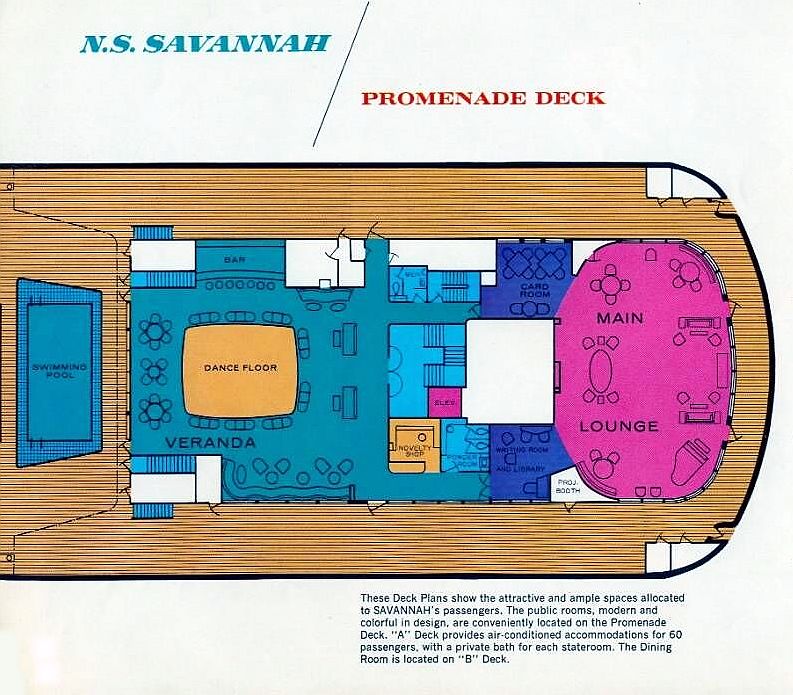
View a much larger Deck plan of the entire ship online via THIS LINK
When it opens it
will be smaller, just click on it and it will enlarge
For
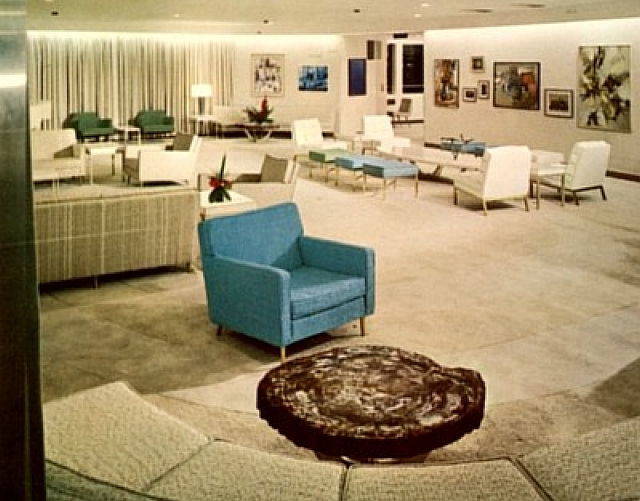
Large windows on the Lounge three sides overlooked her glass enclosed sides and the forward promenade deck.
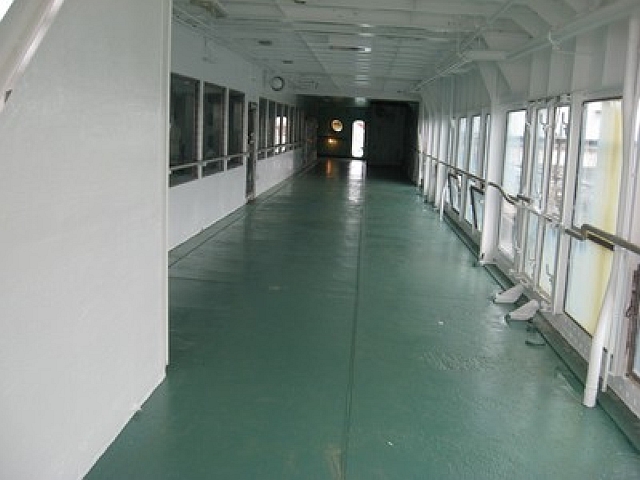
Far aft on Promenade Deck was the spacious Veranda Lounge and Bar, complete with a large dance floor in the middle and a Bar located on the portside wall. Unlike the Main Lounge, this room was not carpeted, but had its floor covered in a non-slip blue tilling and the dance floor in white. Furnishings were streamlined and ultra modern in style befitting the day. The colour scheme varied from white, blue and grey leather, as well as red leather bar stools and blue and white striped upholstery chairs. At night when the lights were dimmed, all the cocktail tables would be illuminated and bring a whole new kind of charm to this venue. The Veranda’s huge aft facing windows looked out to the swimming pool and Lido Deck. The overall idea of the decorator’s was not to overcrowd this venue and to keep it simple and use just a few splashes on colour and as can be seen no curtains, giving this venue that beach and club like feel during the day.
The Bar was surrounded by a beige sculptured feature wall that was created by artist Pierre Bourdelle, who also did a feature wall in the Dinning Room. In addition, the Bar’s deep blue back wall has an unusual colourful lit up feature, being a futuristic sculpture made from glass and metal that is meant to represent the “Periodic Table of Elements”
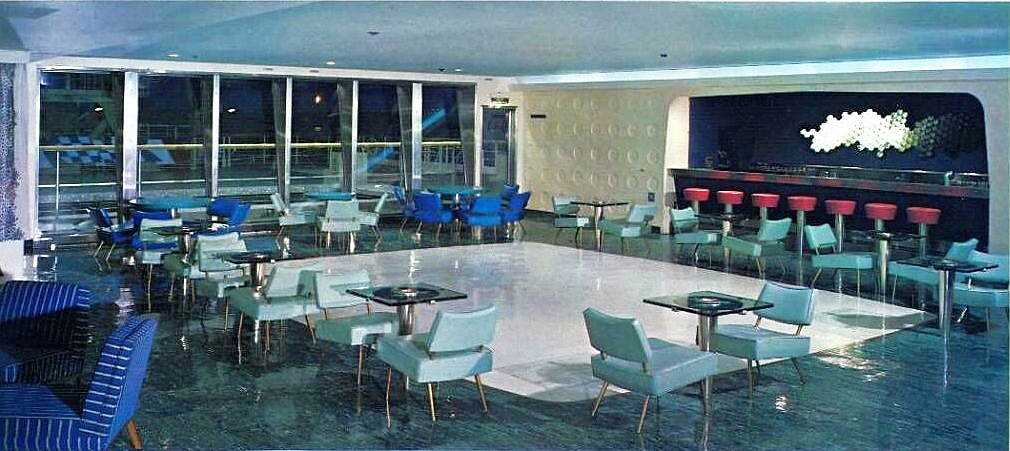

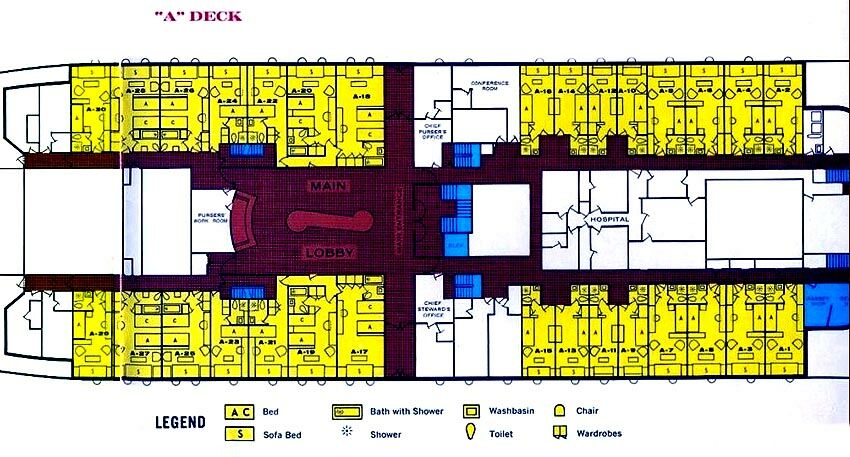
Down on A Deck far forward starboard side was the hairdresser and the men’s barber, whilst amidships the rather streamlined over modernistic Main Lobby and the Pursers Desk located on the centre aft wall. When I saw her in Rotterdam Holland, the lobby and the pursers office certainly looked far better than it looks in the photograph below, the glass display cases on both sides were then filled with all sorts of items that were for sale, including the Cobalt Blue M.S. Savannah dish seen below the Lobby photograph.
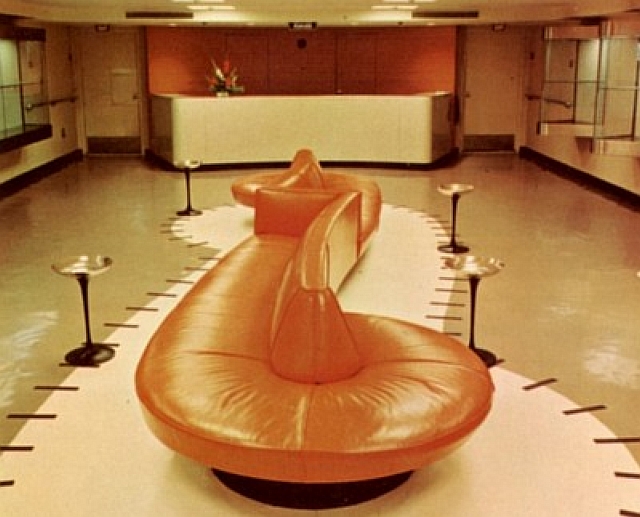
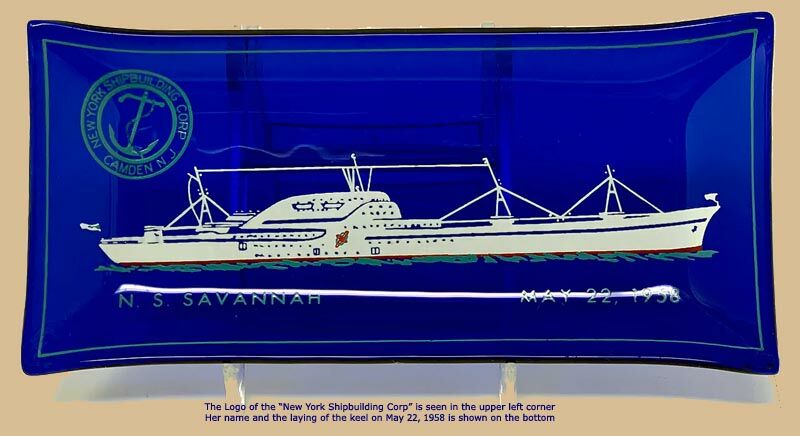
In addition A Deck also contained all the ships passenger accommodations consisting of thirty superbly furnished staterooms all having private facilities. Cabins A-01 to A-16 located forward had one berth as well as one sofa bed in the lounge area and a bathroom with a shower, etc. Located along the Main Lobby are two series of cabins - A-17, 19 & 21, and A-18, 20 & 22. These are the suites of the ship which can be sold independently as both A-17 and A-18 are the most spacious rooms on-board. However, as there is a connecting passage between these three cabins on each side of the ship they can also be sold as three roomed deluxe suites. Rooms 17 to 20 have full sized baths, as do rooms 25 to 28 further aft, all other cabins have showers. See the Cabin Plan below for details. However all rooms had a sofa, one or two lounge chairs and as well as a coffee table in the lounge areas, ample wardrobe space and every possible comfort that would be expected on a luxury ship.
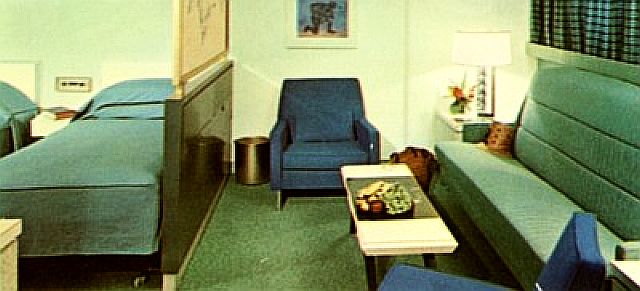
Amidships on B Deck, being the lowest passenger level was just one passenger facility the Dinning Room. It could only be reached via the main stairwell, just forward of the main Lobby of from promenade Deck. This delightful venue was light and bright, very modern with mid toned blue walls and blue and lighter blue stripped carpet. The main special features include the superb bronze model of the 1818 SS Savannah at the entrance on the Port side, on a stand in the garden bed, as well as such as a delightful slightly off white sculptured curved wall by artist Pierre Bourdelle called “Fission.” This wall did have a purpose, for it allowed stewards to enter and come out of the galley on the respective sides, thus beautifully hiding the entrance to the galley!
The Dinning Room
was furnished with tables for two, four, eight to twelve with red
and blue chairs with the venue offering sufficient seating for
all passengers in one sitting. Although the
There was just one thing lacking in this remarkable venue and that was natural light and views, for there were no windows or portholes whatsoever! The walls were covered with what was more of a mural of blue with vertical misshapen stripes of several lighter colours that really looked very attractive. However, as I stated at the outset this venue was indeed light and bright as special lighting was installed and it made the Dinning Room a wonderfully happy place to be in and no one would have missed the exterior for the cuisine was simply amazing!
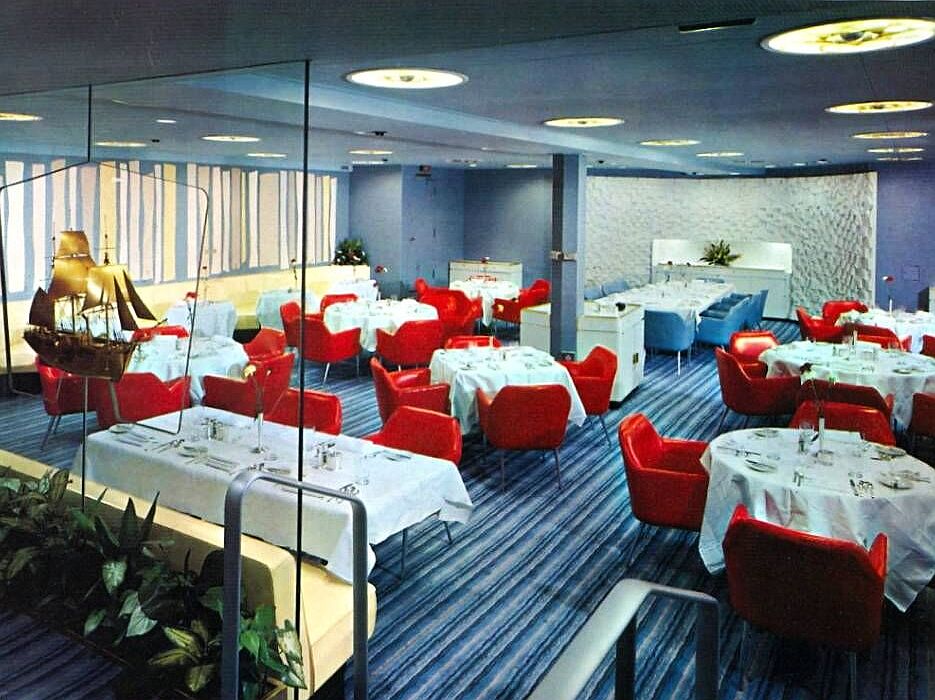
Please note the
Restaurant ceiling light fittings as they are similar to the one
below that were featured onboard!


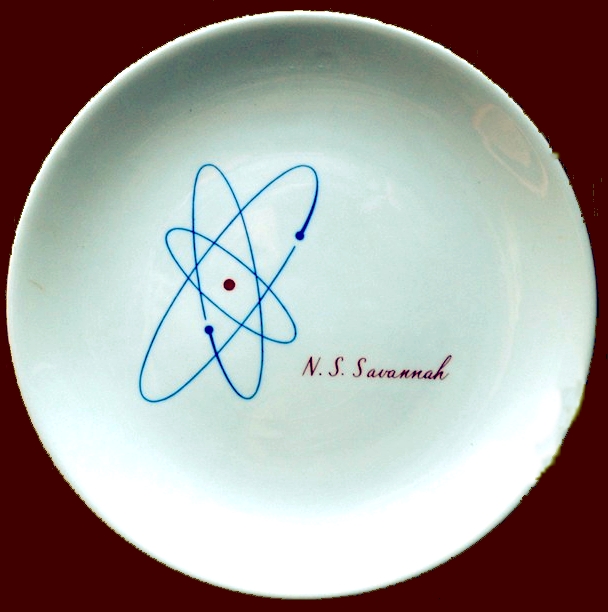
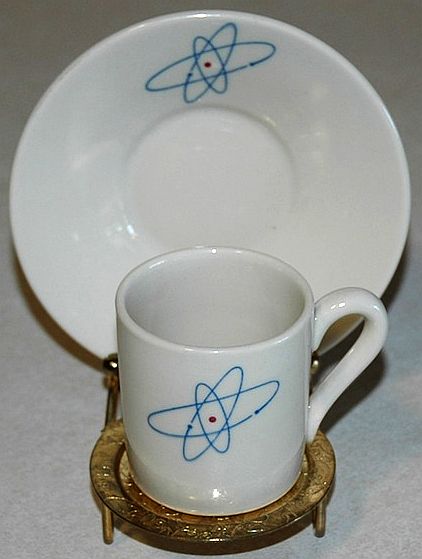
In 1965 the
Maritime Administration leased the N.S. Savannah to the
“First Atomic Ship Transport Inc”, of the famed
“American Export-Isbrandtsen Lines” for she was unsalable
and she could only operate as a cargo ship. Thus
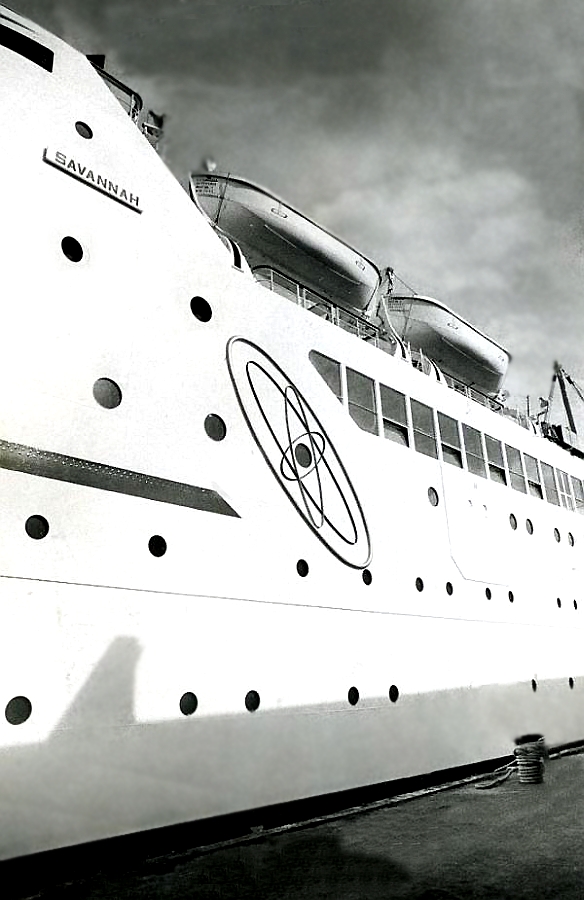
A fine image of her
portside whilst she was in port!
“By many measures, the ship was a success. She performed well at sea, her safety record was impressive, her fuel economy was unsurpassed, and her gleaming white paint was never smudged by exhaust smoke. Even her cargo handling equipment was designed to look good.”
All this may be good and true, but with the author having been a co-owner owner of a cruise company, I can tell you nothing said in that statement makes the N.S. Savannah a financial success, for she was, I have to say a failure, and sadly that a fact, and the simple truth as I will describe this after I have summed her up!
I am sorry, I may be repeating myself somewhat, but I do wish to be most fair to what was indeed a beautifully designed ship!
There is no
doubt that if you look at this amazing ship, considering she was
designed in the mid Fifties, she is certainly is one of the most
beautifully designed sleek, streamlined luxury Passenger-Cargo
liners ever to have been built and that is regardless if
she was powered by regular steam turbines engines, diesel engines
or as in this case operating on nuclear powered steam engines!
There is no doubt that this ship is as modern as tomorrow!
The
The Savannah
accommodated just 60 First Class passengers, but her public rooms
were scaled to suit a much larger job of receiving sizable
groups who would visit her as she proceeded around the world as
the American Ambassador for the Arts, culture and Industry, etc!
The interiors of
the
Metals for example, were given new jobs, new faces, or even a new form. Large sheets of textured aluminium were colour-anodised in blues, greens and golden beige and these were used to panel the bulkheads of the main stairwell. Whilst stainless steel turned to be decorative and was formed into stateroom furniture. Even plastics found new uses, ranging from soft poly foams to fill upholstered chairs and vinyl’s to cover them, to hard-epoxy-porcelain for colour coatings on walls and ceilings.
There were
products of industry’s genius were evident everywhere. Even
entire table tops, around the dance floor in the Ballroom, where
actually lamps that lit up with the colour glow of
electroluminescence.” A closed-circuit television
projector would show large audiences the nuclear reactor in
operation. Those who inspected the
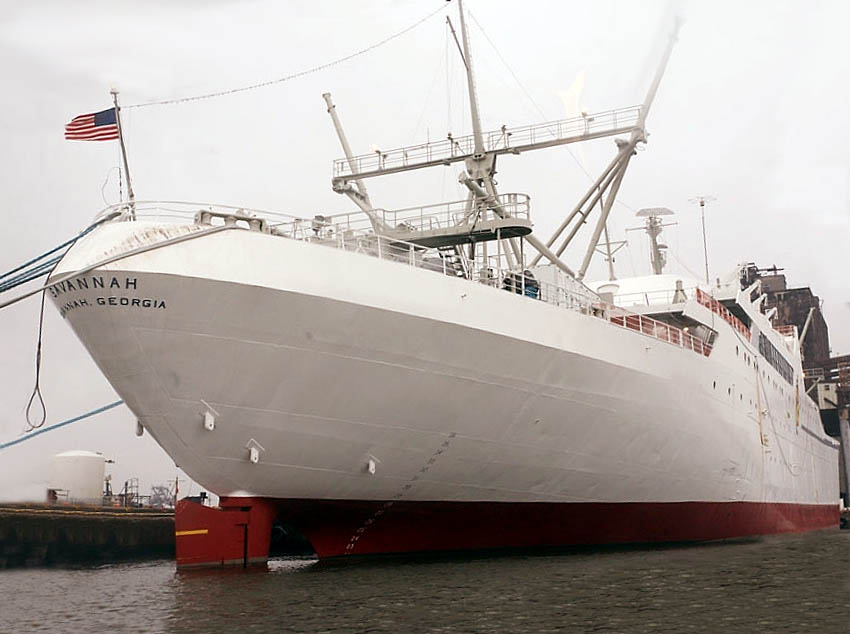
Here we see a
superb view of N.S. Savannah’s stern, whilst she was in port
It is sad to say that in truth the beautifully sleek lines of the Savannah did nothing to aid her future wellbeing, as she was sadly doomed from the very beginning to be a failure, for she was plagued with a variety of design problems. Obviously there were passengers who had fears to sail on her, for the very thought of sailing on a nuclear powered ship did not seem to be safest of things to do in the sixties as people did not trust this new technology! In addition there was a massive design error when it came to her overall hull design as the future would comprehensively prove that and put her our of business for good, as well as the eventual cost of operation which was mostly due to having to crew the ship with large number of mariners. Thus the cost of keeping her sailing was far too great and she could never have made a sufficient profit to cover the costs!
One of her major
design problems was the fact that
And as I have
already stated a number of times she had that massive crew, a
third larger compared to a regular ship, also
No ship with these disadvantages could possibly hope to be commercial success. Thus the solution became a simple one, already her once beautiful passenger space was totally wasted since 1965, and already her cargo capacity was insufficient for a ship of her size operating with such a huge crew. As a result with her many handicaps the Eisenhower’s pride, the N.S. Savannah ended up costing over US$2 million a year more in operating subsidies compared to a similar sized cargo ship, that was powered by a diesel/motor or turbine steam engine.
The Maritime Administration (MARAD) finally had to decommission the N.S. Savannah early in 1972, which was a wise decision because she was losing them massive amounts and she was no longer the ship that was originally intended, the “Pride of America”, a luxury ship transporting 60 happy passengers in luxurious surroundings, for as we know that had turned out to be a failure and tragically her passenger days ceased after only three after just two and a half or so years and that is a sad failure indeed! One that could have possibly been better far managed had they had the right media team!
As we read
earlier in this story, N.S. Savannah’s namesake, the S.S.
Savannah in 1819 became the very first steam powered ship to
cross the Atlantic and she was also a commercial failure even
though she was innovative when it came to propulsion in her age,
indeed she made history, and so it would be for her namesake the
N.S. Savannah. The
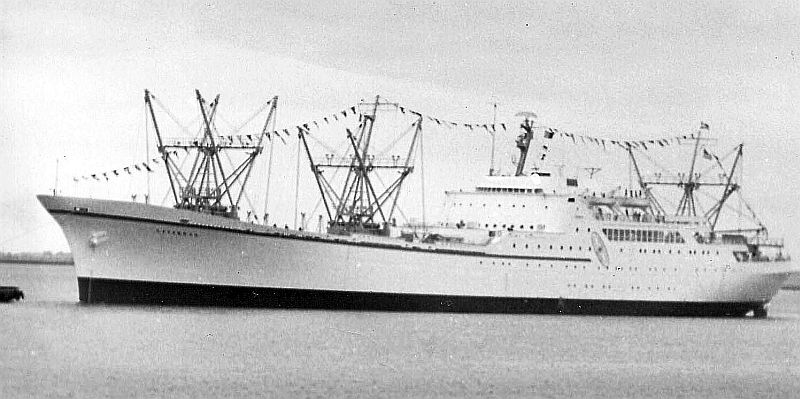
On January 30,
2007, the
While still
under a long term contract with Canton Marine Terminal,
N.S. Savannah was towed via C&D canal to
Since Savannah is
historically significant thus she has been designated
a “National Historic Landmark”, MARAD has
expressed interest in offering the ship for preservation
once Savannah's decommissioning, decontamination and
radiological work is completed. A MARAD spokesman told The
Baltimore Sun in May 2008 that the maritime agency envisions
the ship’s eventual conversion into a museum, but that no
investors have yet offered to undertake the project.
***********************************
Operators: States Marine Lines 1962-1965.
.
American Export-Isbrandtsen Lines 1965-1972.
IMI No: 5314793.
Callsign: KSAV.
Ordered: 1955.
Built by:
New York Shipbuilding Co,
Yard Number:
529.
Launched:
July 21, 1959
Completed: December 1961.
Delivered: May 1, 1962.
Cost:
Us$46,900,000 (18,600,000 for the ship, & $ 28,300,000 for
the nuclear plant & fuel.
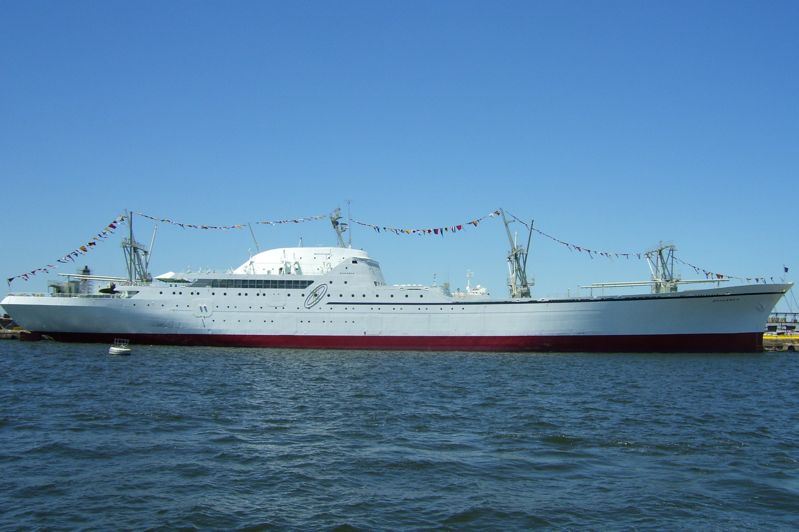
I have watched only a small part of this documentary, and all I can say that this is a simply remarkable achievement and a must have DVD! It contains so much great footage of this amazing ship and it will provide you with so much more than just an insight into the ship!
Thus do yourself a favour and for a pittance get yourself a copy of this excellent DVD and enjoy it for yourself, as you will need to watch it again and again!
Reuben Goossens.
“Blue Water Liners sailing to
the distant shores.
I watched them come, I watched them go and I watched them die.”
Featuring over 1,550 Classic Passenger Liners, Passenger-Cargo Liners & Classic Cruise Ships!
Or ENTER HERE
For interest: Sadly an email service to ssMaritime is no longer available, due to the author’s old age and chronic illness as well as being disabled, etc. In the past ssMaritime received well over 120 emails per day, but Mr. Goossens can no longer handle same. He sincerely regrets this!
*********************
ssMaritime.com
& ssMaritime.net
Where the ships of the past make history & the 1914 built M.S. Doulos Story.
The Author has been in Passenger Shipping & the Cruise Industry for well over 60 years
In addition he was the founder of “Save the Classic Liners Campaign” in 1990.
Please Note: ssmaritime and associated sites are 100% non-commercial and the author seeks no funding or favours of any shape or form, never have and never will!
Photographs on ssmaritime and associate pages are by; the author or from the author’s private collection. In addition there are some images that have been provided by Shipping Companies and private photographers or collectors. Credit is given to all contributors. However, there are some photographs provided to me without details regarding the photographer/owner concerned.
This notice covers all pages; although, and I have done my best to ensure that all photographs are duly credited and that this notice is displaced on each page, that is, when a page is updated!
ssMaritime is owned & © Copyright by Reuben Goossens - All Rights Reserved